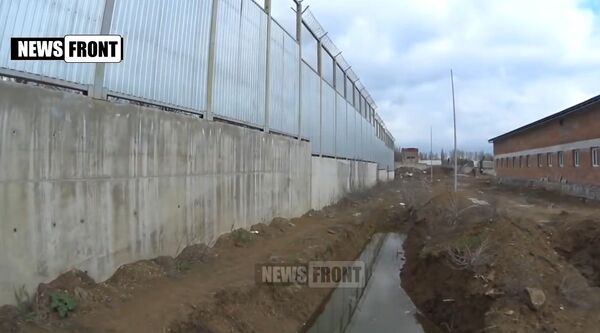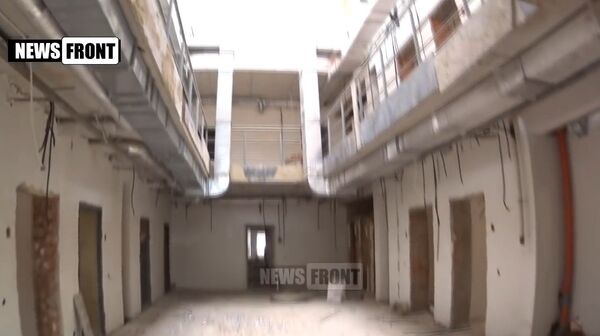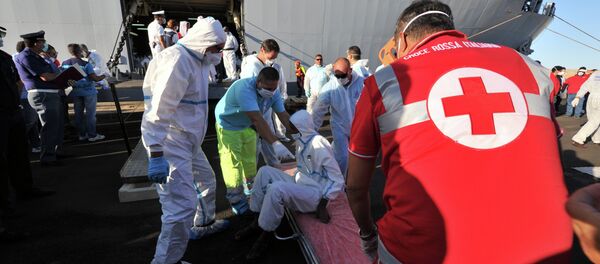A new video has emerged of a mysterious half-completed prison complex in the town of Zhdanovka in the self-proclaimed Donetsk People's Republic in Ukraine's Donetsk region. Built on a grant from the European Union's ENPI program, construction halted when the Ukraine's civil war began and DPR militias took control of the area.
Local residents believe that the facility was built to house dissidents in case of internal conflict, although documents suggest that the construction was part of a 2011, 30 million euro ($42 million in 2011) project for housing asylum seekers deported from EU countries.

The project is part of a system in which asylum seekers in Europe who entered through Ukraine are sent to back Ukraine, where they are charged with illegally crossing the border and arrested.
The system allows European Union countries to reject asylum seekers by sending them to Ukraine, where the legal qualifications for asylum are much stricter and refugees are granted a food allowance of less than $2 per month, according to a February article in Spiegel. In 2012, refugees from Somalia went on a hunger strike in protest of the meager food allowance.
In 2010, Human Rights Watch gathered interviews from asylum seekers who went through the system:
"They beat me. One had a pistol and hit me with the pistol on my head. I was on the ground, unconscious. They laid me on the ground in the snow for about one hour. When I was lying on the ground, they hit me on the back and put their foot on my neck," an asylum seeker from Pakistan told HRW then.
Ukraine has been criticized by the United Nations High Commissioner for Refugees (UNHCR) for its handling of the Europe-bound asylum seekers as recently as October 2013.
Prison Cells the Price of 10 Apartments
The tender for the project was announced in December 2010, before the conflict in Syria and NATO intervention in Libya's civil war and led to an influx of refugees from those countries. The number of migrants going to the EU through Ukraine actually fell by 3.3 percent in the first nine months of 2011.
The project is unlike migrant holding centers in Europe and resembles a prison with small two-person bunk bed cells and a tall barbed wire fence around the facility.

The project intended to create a network of short-term ten-person holding facilities at Ukrainian border crossings, including two at the Russian border, together with two hundred-bed long-term facilities in the Donetsk and Mykolaiv regions. A 50-bed temporary holding facility in Zakarpattia region will be expanded from 50 to 66 beds.
In total, facilities holding 333 migrants were to be built, at a cost of over $126,000 per bed, which is about five times the price of a three-bedroom apartment in the regional capital Mykolaiv.
This was done at a time when existing facilities were only about 40 percent full and often had a ratio of two guards to one detained migrant.
Migrant Conditions
In 2007, the "Agreement between the European Community and Ukraine on readmission of persons" was ratified and readmission of asylum seekers who entered the EU through Ukraine began in 2010.
"After the Hungarian guards left, the Ukrainian guards started beating us right away. They beat me badly. They broke my wrist [showing the interviewer his crooked forearm]," an Afghan asylum seeker told HRW in 2010.
"Three men in civilian clothes took us from our room to another room. They used electric shocks and asked who was your smuggler and beat us," another Afghan asylum seeker said then.
At the time, migrants were held in facilities at border crossings as well as a larger long-term facility in western Ukraine's Lutsk region.
The new facilities significantly expand the existing system and create two new long-term detention centers in addition to the Zhuravychi facility in western Ukraine.



